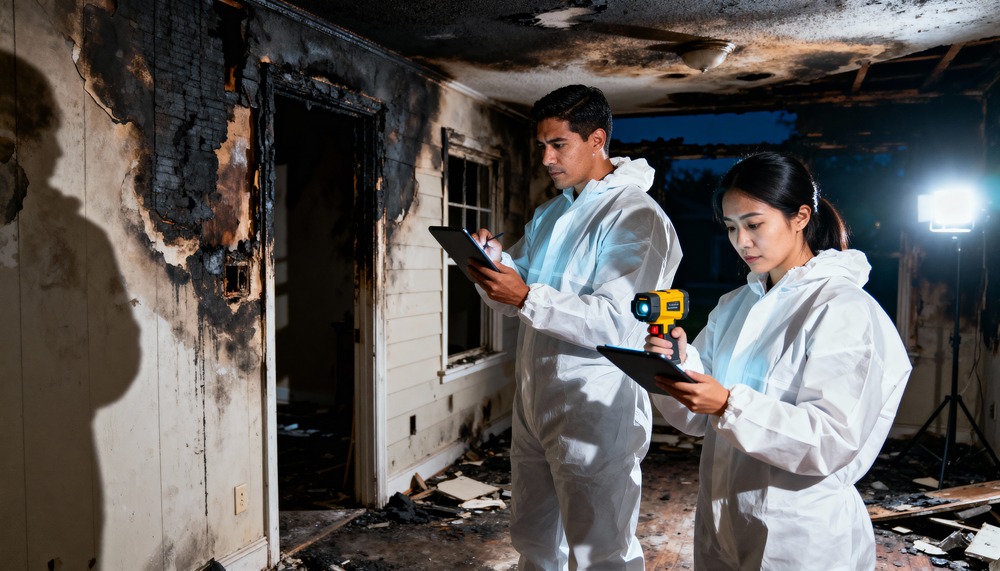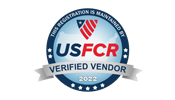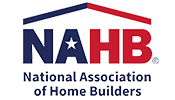What Happens During Fire Restoration?
The fire restoration timeline encompasses all activities from the moment fire damage occurs until your property returns to pre-loss condition or better. Unlike simple repairs, restoration involves multiple specialized processes including emergency stabilization, structural assessment, debris removal, cleaning, reconstruction, and final detailing. Each phase requires specific expertise and coordination between various professionals.
A typical fire damage recovery ranges from 4 to 12 weeks for moderate damage, though this varies significantly based on severity. Minor smoke damage might resolve in 2-3 weeks, while properties with extensive structural damage can take 6 months or longer. The fire repair timeline is rarely linear—some phases overlap, and weather, permit delays, or insurance negotiations can extend completion dates.
Think of fire restoration like surgical recovery: rushing the process risks poor outcomes, but understanding each stage helps you heal properly. Professional restoration companies create detailed project plans specific to your situation, providing milestones and estimated completion dates for each phase of the fire restoration timeline.
Immediate Response Phase (Hours 0-24)
The clock starts ticking the moment the fire is extinguished. This critical first 24 hours sets the foundation for everything that follows and can significantly impact both your fire restoration timeline and total restoration scope.
What Happens During Immediate Response
Emergency contact and site securing occurs within the first few hours. Restoration professionals arrive to assess safety, secure the property against weather and theft, and begin emergency mitigation. They’ll board up openings, tarp damaged roofs, and establish security measures to protect what remains of your property.
Initial damage assessment identifies immediate threats like structural instability, electrical hazards, or continued water damage from firefighting efforts. Professionals document conditions through photographs and notes, creating a baseline for insurance claims and restoration planning.
Water extraction begins immediately if firefighting efforts left standing water. Every hour water sits increases secondary damage, promotes microbial growth, and extends your overall fire damage recovery. Professional equipment removes water and begins the drying process that continues into subsequent phases.
| Time Frame | Priority Actions | Key Professionals | Expected Outcomes |
|---|---|---|---|
| 0-4 hours | Site security, hazard identification, emergency contacts | Restoration coordinator, security team | Property secured, safety established |
| 4-12 hours | Water extraction, initial documentation, equipment deployment | Mitigation specialists, documentation team | Active damage mitigation underway |
| 12-24 hours | Continued drying, structural evaluation, insurance notification | Structural engineer, insurance adjuster | Comprehensive damage scope identified |
💡 Pro Tip: Contact a professional restoration company within 2-4 hours of the fire being extinguished. Every hour of delay increases secondary damage and extends your overall fire restoration timeline by days or even weeks.
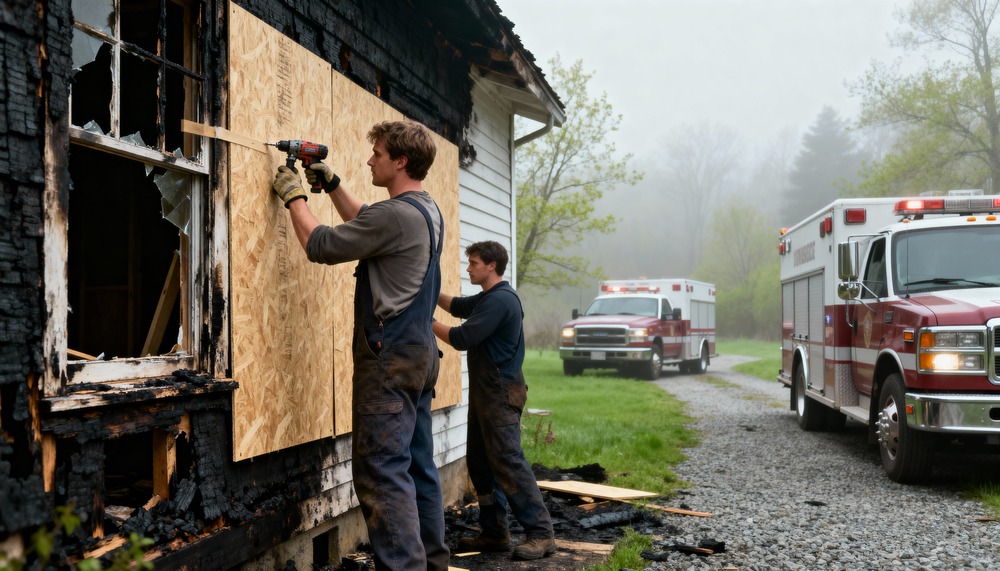
Assessment and Documentation Phase (Days 1-3)
Once immediate threats are addressed, detailed assessment begins. This phase determines the full scope of work and creates the roadmap for your entire fire repair timeline.
Comprehensive Damage Evaluation
Restoration professionals conduct room-by-room inspections documenting fire damage, smoke damage, water damage, and structural concerns. They test air quality, measure moisture levels, and identify materials requiring removal versus cleaning. This assessment distinguishes between cosmetic damage and structural issues requiring extensive repairs.
Hidden damage receives special attention during this phase. Smoke penetrates wall cavities, HVAC systems, and structural spaces invisible to casual inspection. Professionals use thermal imaging cameras, moisture meters, and air quality testing equipment to identify all affected areas, preventing future problems from undiscovered damage.
Documentation standards matter tremendously for insurance claims and legal protection. Professional restoration companies photograph every damaged area, create detailed inventory lists, and maintain digital records throughout the process. This documentation justifies repair costs and protects you if disputes arise later.
Developing Your Restoration Plan
Based on assessment findings, restoration professionals create a detailed project plan outlining work phases, estimated schedules, equipment requirements, and team assignments. This plan becomes your guide through the fire damage recovery process and helps set realistic expectations about completion dates.
⚠️ Important: Never allow unqualified individuals to conduct fire damage assessments. Improper evaluation leads to incomplete repairs, hidden problems, and significantly extended schedules when issues resurface later.
Emergency Mitigation Phase (Days 1-7)
Mitigation prevents additional damage while preparing the property for reconstruction. This phase often overlaps with assessment as teams work simultaneously on different areas of the fire restoration timeline.
Core Mitigation Activities
Content removal and protection involves carefully packing salvageable items and moving them to climate-controlled storage. Electronics, documents, fabrics, and personal belongings receive specialized cleaning and restoration off-site while structural work proceeds.
Structural drying continues aggressively using industrial dehumidifiers, air movers, and monitoring equipment. Professionals measure moisture levels multiple times daily, adjusting equipment placement to ensure thorough drying. This process typically requires 3-7 days depending on the extent of water damage from firefighting efforts.
Soot and smoke residue removal requires specialized techniques based on fire type and affected materials. Professionals use dry cleaning sponges, HEPA vacuums, and specific cleaning solutions appropriate for different surfaces. They work systematically from top to bottom, preventing recontamination of cleaned areas.
- Air scrubbing and odor control: Industrial air scrubbers with HEPA filters remove airborne particles while hydroxyl generators or ozone treatment eliminates stubborn smoke odors
- Antimicrobial treatment: Prevents microbial growth in areas affected by firefighting water, protecting indoor air quality and preventing health hazards
- HVAC system cleaning: Ductwork and systems receive thorough cleaning to prevent smoke particles from circulating throughout the property after restoration
- Temporary protection: Continued weatherproofing and security measures maintain property protection throughout the restoration process
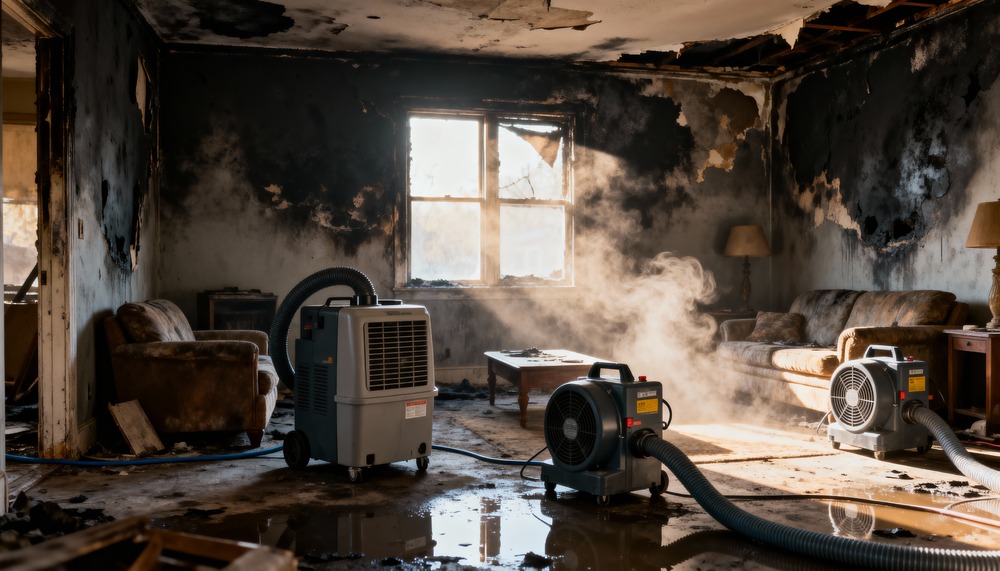
Planning and Permitting Phase (Days 5-14)
While mitigation wraps up, planning for reconstruction begins. This administrative phase often determines how smoothly the remaining fire repair timeline proceeds.
Building Permits and Inspections
Most restoration projects require building permits, especially when structural repairs, electrical work, or plumbing modifications occur. Professional restoration companies handle permit applications, working with local building departments to secure necessary approvals. Permit processing typically takes 5-14 days depending on local requirements and damage complexity.
Engineering assessments may be required for properties with significant structural damage. Licensed structural engineers evaluate load-bearing elements, foundation integrity, and overall stability, providing reports that inform repair strategies and satisfy building department requirements.
Insurance Coordination
Your insurance adjuster reviews damage documentation, meets with restoration professionals, and approves the scope of work. This negotiation process can extend the fire restoration timeline if disputes arise over coverage amounts or necessary repairs. Professional restoration companies experienced in insurance work help navigate these conversations effectively.
🏠 Home Tip: Maintain detailed records of all communications with your insurance company, including dates, names, and discussion topics. This documentation proves invaluable if disagreements arise about coverage or schedule expectations.
Structural Restoration Phase (Weeks 2-8)
With planning complete and permits in hand, reconstruction begins. This phase represents the most visible progress and typically consumes the largest portion of your fire restoration timeline.
Demolition and Debris Removal
Before rebuilding begins, damaged materials require removal. Professionals systematically demolish and remove burned framing, charred drywall, compromised flooring, and unsalvageable fixtures. They work carefully to preserve undamaged materials and structural elements, minimizing unnecessary reconstruction scope.
Hazardous material handling requires special protocols if asbestos, lead paint, or other regulated materials are present. Licensed abatement contractors remove these materials following strict safety guidelines, which can add 1-2 weeks to your fire damage recovery but ensures occupant safety.
Structural Repairs and Reconstruction
Rebuilding follows a logical sequence that mirrors original construction: structural framing, rough-in work (electrical, plumbing, HVAC), insulation, drywall installation, and finishing work. Each trade requires inspection and approval before subsequent work proceeds.
| Reconstruction Phase | Typical Duration | Key Activities | Inspection Points |
|---|---|---|---|
| Framing repairs | 3-7 days | Replace damaged studs, joists, rafters, and load-bearing elements | Framing inspection |
| Rough-in work | 5-10 days | Install new electrical, plumbing, and HVAC systems | Rough inspection for each trade |
| Insulation and drywall | 7-14 days | Install insulation, hang and finish drywall, prime walls | Insulation inspection |
| Interior finishes | 10-21 days | Install flooring, cabinets, trim, doors, and fixtures | Final building inspection |
Quality control checkpoints occur throughout reconstruction. Professional restoration companies conduct internal quality inspections at each phase, catching issues before they become costly problems. Building inspectors verify code compliance, ensuring your restored property meets all current safety standards.
Final Repairs and Finishing Phase (Weeks 6-12)
As major construction concludes, attention shifts to details that transform a reconstruction project back into your home or business.
Finishing Touches
Paint and texture work brings visual consistency to repaired areas. Professional painters match existing colors and textures, blending new work seamlessly with undamaged portions. Multiple coats ensure proper coverage and durability.
Final installations include light fixtures, plumbing fixtures, hardware, and decorative elements. Technicians test all systems thoroughly, verifying that electrical outlets work properly, plumbing has no leaks, and HVAC delivers appropriate airflow to all spaces.
Cleaning and detailing removes construction dust and debris, leaving your property move-in ready. Professional cleaners address windows, floors, fixtures, and surfaces, ensuring no construction residue remains.
Final Inspection and Walkthrough
Before completion, the building department conducts a final inspection certifying that all work meets code requirements. Following this approval, restoration professionals conduct a detailed walkthrough with you, demonstrating system operation and addressing any concerns.
💡 Pro Tip: Create a punch list during your final walkthrough noting any minor items needing attention. Professional restoration companies address these items promptly, ensuring complete satisfaction before closing the project.
Factors That Impact Your Fire Restoration Timeline
Multiple variables influence how long your specific fire restoration timeline takes. Understanding these factors helps set realistic expectations and identify potential delays early in your fire damage recovery.
Damage Severity and Scope
The single largest factor affecting your fire repair timeline is damage extent. Small kitchen fires might require only 2-3 weeks for restoration, while whole-house fires can take 4-6 months. Smoke damage extends further than visible fire damage, requiring extensive cleaning that adds time to the process.
Property Size and Complexity
Larger properties naturally require more time for assessment, mitigation, and reconstruction. Complex architectural features, custom finishes, or historical elements demand specialized expertise and extended schedules. Multi-story buildings face additional logistical challenges affecting work efficiency.
Material Availability
Custom materials, specialty finishes, or items with long lead times can significantly extend the fire restoration timeline. Supply chain disruptions, discontinued products, or seasonal availability impact scheduling. Professional restoration companies maintain relationships with multiple suppliers, helping minimize these delays.
Insurance Processing Speed
Insurance company responsiveness dramatically affects project momentum. Quick claim processing and prompt approvals keep restoration moving forward, while disputes or delays can pause work for weeks. Restoration companies experienced in insurance coordination help navigate this process efficiently.
Permit and Inspection Timing
Local building departments operate on varying schedules. Some municipalities process permits within days, while others require weeks. Inspection availability affects reconstruction pacing—if inspectors book weeks out, your project waits even if construction completes early.
Weather and Seasonal Factors
Weather impacts exterior work significantly. Rain delays roofing repairs, freezing temperatures slow concrete work, and extreme heat affects material installation. Winter months often extend the fire repair timeline in cold climates, while hurricane season creates scheduling challenges in coastal regions.
- Contractor availability: High-quality restoration companies maintain consistent staffing, but major disasters affecting multiple properties simultaneously can strain resources
- Code requirements: Current building codes may require upgrades beyond simple replacement, adding scope and time to projects
- Hidden damage discovery: Problems revealed during demolition extend schedules as teams address unexpected issues
- Owner decision-making: Prompt selections regarding materials, finishes, and upgrades keep projects moving, while delayed decisions pause progress
Common Delays and How to Avoid Them
While some factors lie outside your control, proactive measures minimize preventable delays and keep your fire restoration timeline on track.
Insurance Documentation Delays
Prevention strategy: Respond immediately to all insurance requests for information or documentation. Keep organized files with receipts, photographs, and correspondence readily accessible. Professional restoration companies assist with documentation, but your prompt cooperation keeps the process moving.
Permit Processing Holdup
Prevention strategy: Work with restoration companies that have established relationships with local building departments. These companies understand specific requirements and submit complete applications the first time, avoiding rejection delays. Some municipalities offer expedited permit processing for fire damage—ask if this option exists in your area.
Material Selection Indecision
Prevention strategy: Make material and finish selections early in the process, ideally during the planning phase. Restoration companies provide samples and options upfront, allowing thoughtful decisions without rushing. Changed selections mid-project cause the most significant delays—commit once and stick with choices.
Communication Breakdowns
Prevention strategy: Establish clear communication protocols with your restoration company from day one. Schedule regular progress meetings, maintain a single point of contact, and address concerns immediately rather than letting them accumulate. Miscommunication causes more project delays than any technical challenge.
⚠️ Important: Never attempt DIY repairs during the restoration process without consulting your restoration company and insurance adjuster. Unauthorized work can void warranties, violate insurance agreements, and create safety hazards that extend your fire restoration timeline significantly.
Working with Your Insurance Company
Insurance coordination represents a critical component of your fire damage recovery. Understanding this relationship helps prevent delays and disputes throughout the fire repair timeline.
Initial Claim Filing
Contact your insurance company within 24 hours of fire damage occurring. Most policies require prompt notification, and delays can complicate claims. Provide preliminary information about damage extent while professional assessment continues.
Adjuster Coordination
Your insurance adjuster visits the property to assess damage and determine coverage. Schedule this visit promptly and ensure your restoration company representative attends. Having both parties present prevents miscommunication and allows immediate discussion of repair approaches.
Document everything during adjuster visits. Take notes about what the adjuster examines, questions asked, and preliminary comments about coverage. This record proves invaluable if disputes arise later about damage scope or repair necessity.
Understanding Coverage Limits
Review your policy carefully to understand deductibles, coverage limits, and exclusions. Some policies limit certain categories of repairs or require specific documentation for coverage approval. Professional restoration companies familiar with insurance processes help maximize legitimate claims while maintaining ethical standards.
Handling Disputes
If disagreements arise with your insurance company about coverage or repair scope, document your position thoroughly. Independent assessments, professional opinions, and detailed damage documentation support your case. Many policies include dispute resolution processes—understand these options before conflicts escalate.
🏠 Home Tip: Consider hiring a public adjuster if your claim involves significant disputes or complex damage. These professionals work for you rather than the insurance company, advocating for fair settlement while you focus on other restoration aspects.
Frequently Asked Questions
How long does a typical fire restoration timeline take from start to finish?
Most residential fire restoration projects take between 4 and 12 weeks depending on damage severity. Minor smoke damage might resolve in 2-3 weeks, while extensive structural fires can require 6 months or longer. Your restoration company provides a specific fire restoration timeline after completing the initial assessment and developing a detailed project plan.
Can I stay in my home during the fire damage recovery process?
This depends on damage extent and safety considerations. Properties with isolated damage to specific rooms may allow partial occupancy, while extensive damage requiring major reconstruction typically necessitates temporary relocation. Your restoration company and local building officials assess safety factors including air quality, structural integrity, and access to essential utilities before determining occupancy feasibility.
What happens if hidden damage is discovered during the fire repair timeline?
Hidden damage discoveries are common during fire restoration as demolition reveals conditions invisible during initial assessment. Professional restoration companies document newly discovered damage immediately, notify your insurance company, and adjust the project scope accordingly. This may extend your fire restoration timeline by several days to weeks depending on the issue’s complexity, but addressing hidden damage prevents future problems.
Should I hire a general contractor or a fire restoration specialist?
Fire restoration specialists offer significant advantages over general contractors for fire damage recovery. They understand smoke and soot behavior, possess specialized cleaning equipment, maintain insurance company relationships, and coordinate all trades under one contract. General contractors lack this specialized expertise and may underestimate damage scope, leading to incomplete repairs and potential health hazards from residual contamination.
How do I know if the fire restoration is truly complete?
Complete restoration includes passing final building inspections, receiving certificates of occupancy, addressing all punch list items, and achieving clearance testing for air quality when applicable. Professional restoration companies provide documentation confirming all work meets industry standards and code requirements. You should notice no smoke odors, see seamless integration of repaired areas, and have confidence in all system operations.
What’s the most common reason fire restoration timelines get delayed?
Insurance coordination represents the leading cause of delays in the fire restoration timeline. Slow claim processing, disputes over coverage scope, or requests for additional documentation can pause projects for weeks. Choosing a restoration company experienced in insurance coordination and maintaining prompt communication with all parties significantly reduces these delays and keeps your fire damage recovery on track.
Moving Forward with Confidence
Understanding the fire restoration timeline transforms an overwhelming situation into a manageable process. While fire damage creates significant disruption, professional restoration brings properties back to pre-loss condition or better, typically within several weeks to a few months depending on complexity.
The key to successful fire damage recovery lies in partnering with experienced professionals who understand every phase of the process. They coordinate multiple specialists, navigate insurance complexities, and maintain momentum through permit processing and construction phases. Their expertise transforms a potentially chaotic situation into an organized restoration project with clear milestones and realistic expectations.
Remember that quality restoration requires time—rushing the process risks incomplete repairs, hidden problems, and future complications. Trust the fire repair timeline developed by professionals based on your specific situation, and maintain open communication throughout the journey. With patience, realistic expectations, and the right restoration partner, your property will emerge from this crisis fully restored and ready for normal life to resume.
If your property has suffered fire damage, don’t wait—contact Advanced DRI immediately. Our experienced restoration professionals respond 24/7 to begin the mitigation process, minimize secondary damage, and start your path toward complete recovery. Every hour matters in fire restoration, and our team has the expertise, equipment, and dedication to restore your property efficiently while maintaining the highest quality standards. Call us now to discuss your situation and receive a comprehensive fire restoration timeline customized for your specific needs.

